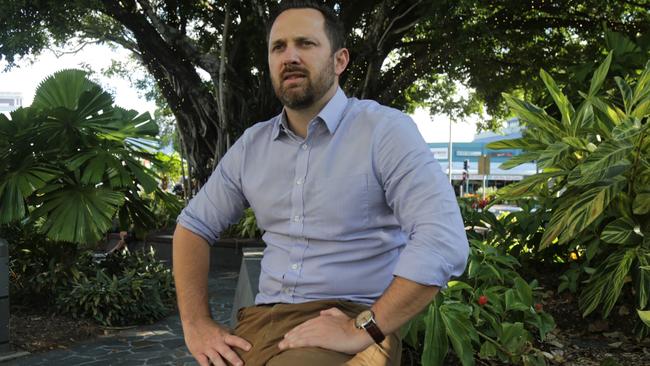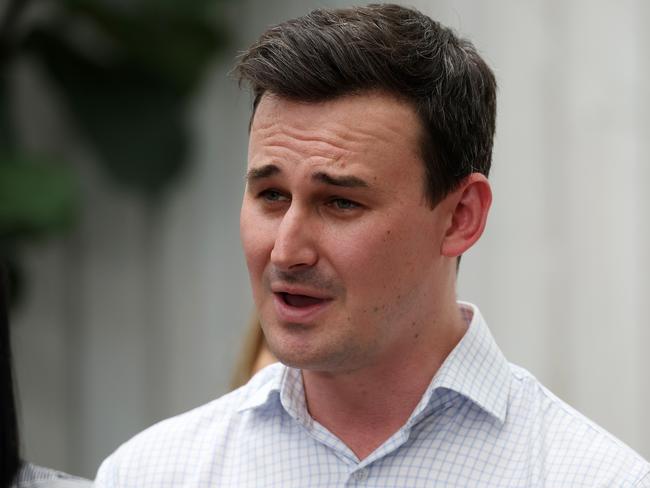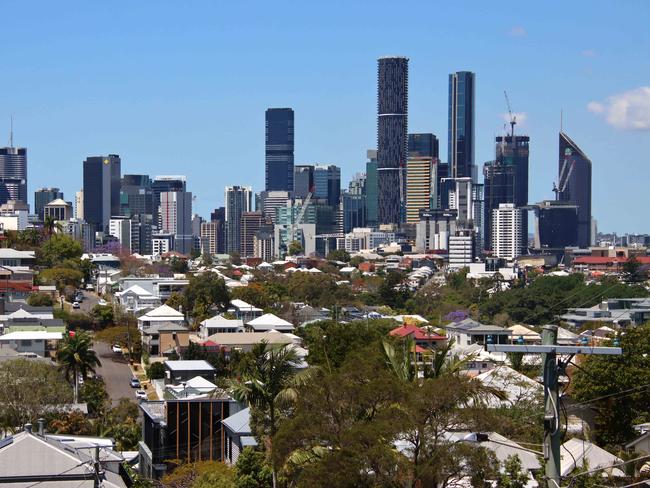Current trajectory leaves Queensland more than 30,000 social homes short by 2044
On its current trajectory, the Queensland government will deliver less than half of the 53,500 social homes it said it would build.

QLD Politics
Don't miss out on the headlines from QLD Politics. Followed categories will be added to My News.
The Queensland government faces a shortfall of 30,000 social homes if it fails to double construction, as the state’s homeless rates skyrocket.
Just 1223 social homes were built in the year to June 2024, according to the latest Productivity Commission data, a far cry from the government’s annual goal of 2750.
If the trajectory continues, the state will fall 30,263 homes short of its 20-year target.
It comes as the number of Queenslanders experiencing long-term homelessness – defined as living on the streets for more than seven months over two years – has increases a staggering 72 per cent from 2020-24.
In the last financial year, the number of persistently homeless Queenslanders rose from 6665 to 7563, an increase of 13 per cent.
Micah Projects chief executive Karyn Walsh said Housing Minister Sam O’Connor needed to incentivise and place performance targets on local councils to speed up social housing development.
“Everyone’s been talking about it for so long, they just need to do it,” she said.
“The minister needs to set that environment, he needs to enable communities to break down the barriers to make it happen.
“We just need to build quicker.”
The former Labor government committed in February 2024 to build 53,500 social homes by 2046, an ambitious plan Premier David Crisafulli pledged to not only honour but deliver two years sooner.
At a rate of 1223 builds per year, the state will need to more than double its current construction rate to meet the 2044 target.

The alarming numbers come just two months after Mr O’Connor announced more than 1,800 people had been put on the social housing waitlist between July and September 2024.
An additional 20 people were added to the waitlist every day of the September quarter, contributing to a total of 47,820 Queenslanders waiting for social housing.
As the demand for homelessness support services continues to rise, so does Queensland’s population of 5.6m people.
The Australian Bureau of Statistics has forecast up to an additional two million will live in Queensland by 2044.
Ms Walsh urged the government to consider mixed social housing options that catered to homeless Queenslanders with higher needs, including those experiencing domestic violence.
Q Shelter acting CEO Jackson Hills said various parties needed to be brought together to address the “genuine regional challenge” before the 2032 Olympic Games.
Mr O’Connor said increasing housing supply was the Crisafulli government’s No.1 priority, to help more Queenslanders get a roof over their heads and ensure the most vulnerable had access to safe, secure housing.

“Our current pipeline of social and affordable homes sits at around 3000 dwellings under construction, with more under contract to be delivered,” he said.
“The Crisafulli government has committed to delivering one million new homes over the next two decades, which includes 53,500 social and community homes.
“To achieve this, we’re working hard to ramp up our housing delivery to 2000 social homes per year.”
Mr O’Connor said every dollar of the $2 billion Housing Investment Fund was now directed towards new supply, instead of purchasing existing dwellings as was happening under Labor.
“We’re also working to unleash the potential of the community housing sector and unlock new homes, including delivering a new planning pathway for faith-based organisations who have been offering up their land for much-needed housing across the state,” he said.
“Through our Building Reg Reno announced last week, we’re cutting red tape and fixing outdated regulations to make it easier and more affordable to build in Queensland.”
Mr O’Connor said the Queensland Productivity Commission would soon be working on further enhancing productivity in the building and construction industry.
“We are reducing unnecessary costs, streamlining approvals, and ensuring builders and tradies can get on with the job of building more homes across Queensland,” he said.




